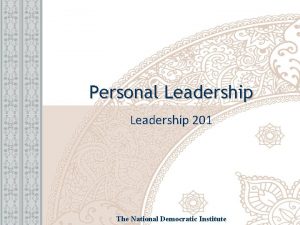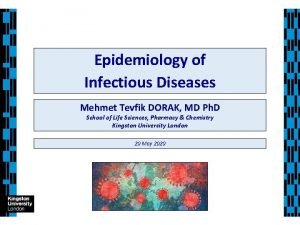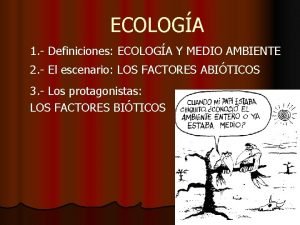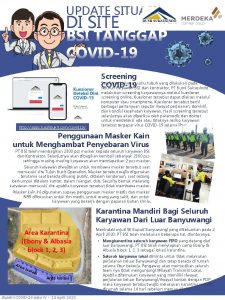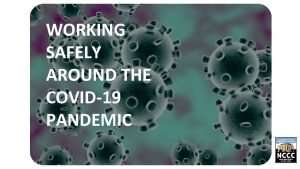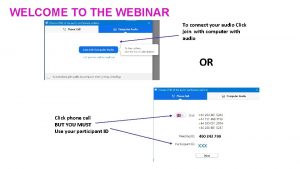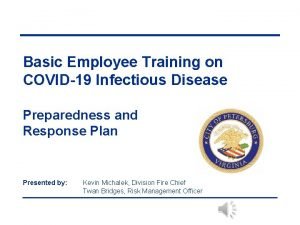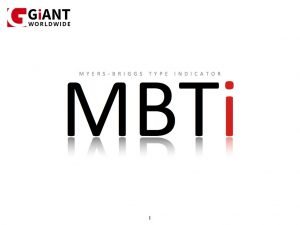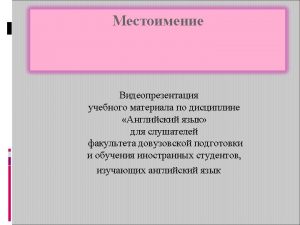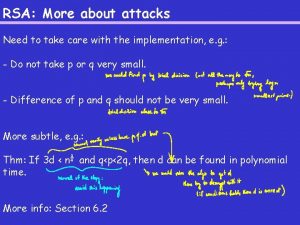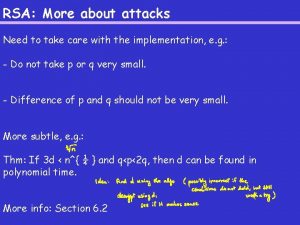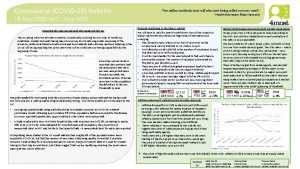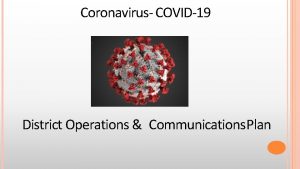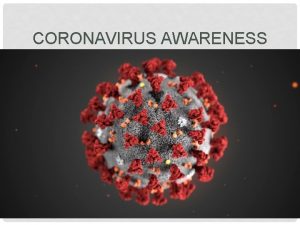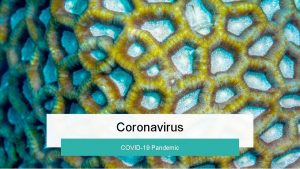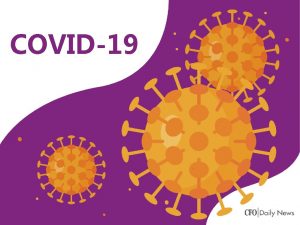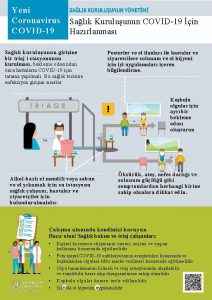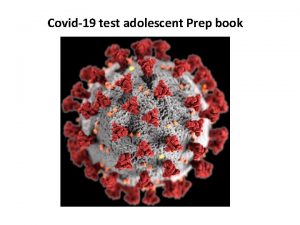Announcements Coronavirus COVID19 Take care of yourself and




















![How to learn a decision tree • Top-down induction [ID 3] (Discrete features) (steps How to learn a decision tree • Top-down induction [ID 3] (Discrete features) (steps](https://slidetodoc.com/presentation_image_h/19b41a3c61bc588d7ef747646c1bbccb/image-21.jpg)










- Slides: 31

Announcements Coronavirus – COVID-19 § Take care of yourself and others around you § Follow CMU and government guidelines § We’re “here” to help in any capacity that we can § Use tools like zoom to communicate with each other too!

Announcements Assignments § HW 6 (online) § Due Thu 3/26, 10 pm Final Exam § Format TBD

Announcements Office Hours § Zoom + OHQueue § See piazza for details Recitation § Zoom session during normal recitation time slot § See piazza for details Zoom § Let us know if you have issues § Recommend turning on video when talking (mute when not talking)

Announcements Lecture § Recorded ahead of time and posted on Canvas § Encouraged to watch during lecture time slot § Zoom session during lecture time slot to answer any questions (optional) “Participation” Points § Polls open until 10 pm (EDT) day of lecture § “Calamity” option announced in recorded lecture § Don’t select this calamity option or you’ll lose credit for one poll (-1) rather than gaining credit for one poll (+1). § Participation percent calculated as usual

Introduction to Machine Learning Decision Trees Instructor: Pat Virtue

Decision trees Popular representation for classifiers § Even among humans! I’ve just arrived at a restaurant: should I stay (and wait for a table) or go elsewhere?

Build a decision tree Search problem

Building a decision tree Function Build. Tree(n, A) // n: samples, A: set of attributes If empty(A) or all n(L) are the same status = leaf class = most common class in n(L): Labels for samples in this set else status = internal Decision: Which attribute? a best. Attribute(n, A) Left. Node = Build. Tree(n(a=1), A {a}) Right. Node = Build. Tree(n(a=0), A {a}) end Recursive calls to create left and right subtrees, n(a=1) is the set of samples in n for which the attribute a is 1

Identifying ‘best. Attribute’ There are many possible ways to select the best attribute for a given set. § We started with using error rate to select the best attribute § We will discuss one possible way which is based on information theory.

Previous Lecture Poll 4 Which attribute {A, B} would error rate select for the next split? 1) A 2) B 3) A or B (tie) 4) I don’t know Dataset: Output Y, Attributes A and B

Previous Lecture Poll 4 Which attribute {A, B} would error rate select for the next split? 1) A 2) B 3) A or B (tie) 4) I don’t know Dataset: Output Y, Attributes A and B

Entropy • Claude Shannon (1916 – 2001), most of the work was done in Bell labs

Entropy • H(X)

Entropy • H(X)

Mutual Information • For a decision tree, we can use mutual information of the output class Y and some attribute X on which to split as a splitting criterion • Given a dataset D of training examples, we can estimate the required probabilities as… 15

Mutual Information • Entropy measures the expected # of bits to code one random draw from X. • For a decision tree, we want to reduce the entropy of the random variable we are trying to predict ! • For a decision tree, we can use Conditional entropy is the expected value of specific conditional entropy mutual information of the output EP(X=x) [H(Y | X = x)] class Y and some attribute X on which to split as a splitting criterion • Given a dataset D of training information is a measure of the following: Informally, we say that mutual If weexamples, we can estimate the know X, how much does this reduce our uncertainty about Y? required probabilities as… 16

Piazza Poll 1 Which attribute {A, B} would mutual information select for the next split? 1) A 2) B 3) A or B (tie) 4) I don’t know Dataset: Output Y, Attributes A and B

Decision Tree Learning Example Y A B - 1 0 + 1 1 + 1 1 18

Decision Tree Learning Example Y A B - 1 0 + 1 0 [2 -, 6+] + 1 1 A + 1 1 Slide credit: CMU MLD Matt Gormley A=0 A=1 [0 -, 0+] P(A=0) = 0 [2 -, 6+] P(A=1)=1 19

Decision Tree Learning Example Y A B - 1 0 + 1 0 [2 -, 6+] + 1 1 B + 1 1 Slide credit: CMU MLD Matt Gormley B=0 B=1 [2 -, 2+] [0 -, 4+] P(B=0)=4/8 P(B=1)=4/8 20
![How to learn a decision tree Topdown induction ID 3 Discrete features steps How to learn a decision tree • Top-down induction [ID 3] (Discrete features) (steps](https://slidetodoc.com/presentation_image_h/19b41a3c61bc588d7ef747646c1bbccb/image-21.jpg)
How to learn a decision tree • Top-down induction [ID 3] (Discrete features) (steps 1 -5) after removing current feature 6. When all features exhausted, assign majority label to the leaf node 21

How to learn a decision tree • Top-down induction [ID 3, C 4. 5, C 5, …] C 4. 5 6. Prune back tree to reduce overfitting 7. Assign majority label to the leaf node 22

Handling continuous features (C 4. 5) Convert continuous features into discrete by setting a threshold. What threshold to pick? Search for best one as per information gain. Infinitely many? ? Don’t need to search over more than ~ n (number of training data), e. g. say X 1 takes values x 1(1), x 1(2), … , x 1(n) in the training set. Then possible thresholds are [x 1(1) + x 1(2)]/2, [x 1(2) + x 1(3)]/2, … , [x 1(n-1) + x 1(n)]/2 23

Dyadic decision trees feature 2 (split on mid-points of features) feature 1 24

When to Stop? • Many strategies for picking simpler trees: – Pre-pruning • Fixed depth (e. g. ID 3) • Fixed number of leaves – Post-pruning – Penalize complexity of tree 25

Penalize Complexity of Tree • Penalize complex models by introducing cost log likelihood cost regression classification penalize trees with more leaves CART – optimization can be solved by dynamic programming 26

Example of 2 -feature decision tree classifier cs. uchicago. edu 27

How to assign label to each leaf Classification – Majority vote Regression – ? 28

How to assign label to each leaf Classification – Majority vote Regression – Constant/Linear/Poly fit 29

Regression trees Num Children? ≥ 2 <2 Average (fit a constant ) using training data at the leaves 30

What you should know • Decision trees are one of the most popular data mining tools • • Simplicity of design Interpretability Ease of implementation Good performance in practice (for small dimensions) • Mutual Information (entropy) to select attributes (ID 3, C 4. 5, …) • Decision trees will overfit!!! – Must use tricks to find “simple trees”, e. g. , • Pre-Pruning: Fixed depth/Fixed number of leaves • Post-Pruning • Complexity penalized model selection • Can be used for classification, regression and density estimation too 31
 Personal leadership statement
Personal leadership statement Stomach and heart
Stomach and heart Scissurite coronavirus
Scissurite coronavirus Relazione finale funzione strumentale orientamento
Relazione finale funzione strumentale orientamento Coronavirus
Coronavirus Factores abióticos
Factores abióticos Rischio biologico coronavirus | titolo x d.lgs. 81/08
Rischio biologico coronavirus | titolo x d.lgs. 81/08 Contenitori per trasporto materiale biologico
Contenitori per trasporto materiale biologico Bronquite coronavirus
Bronquite coronavirus Http//apps.tujuhbukit.com/covid19
Http//apps.tujuhbukit.com/covid19 Do if you covid19
Do if you covid19 Covid19 athome rapid what know
Covid19 athome rapid what know What do if test positive covid19
What do if test positive covid19 Vaksin covid19
Vaksin covid19 Know yourself to lead yourself
Know yourself to lead yourself Check yourself before you wreck yourself origin
Check yourself before you wreck yourself origin Myself yourself himself herself
Myself yourself himself herself Youtube yourself broadcast yourself
Youtube yourself broadcast yourself Pvu background
Pvu background R/announcements!
R/announcements! Church announcements
Church announcements Fahrenheit 451 part 3 test
Fahrenheit 451 part 3 test Kayl announcements
Kayl announcements General announcements
General announcements Primary, secondary, tertiary care
Primary, secondary, tertiary care Corinthians 10 12
Corinthians 10 12 Take a bus or take a train
Take a bus or take a train Take care drake traduction
Take care drake traduction How to take care of your nervous system
How to take care of your nervous system Skeletal system paragraph
Skeletal system paragraph Take care rsa
Take care rsa Take care rsa
Take care rsa
